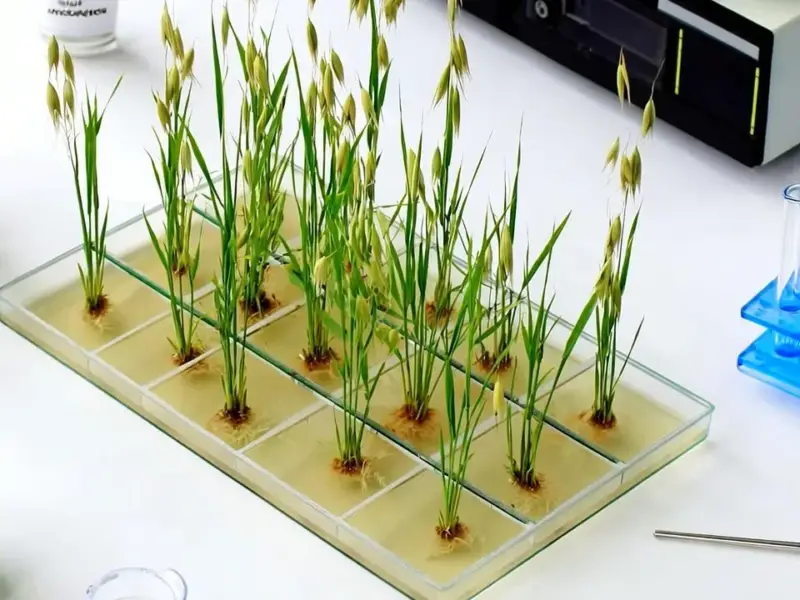According to New Atlas, University of Texas at Austin researchers led by Jesse D. Buffington and Ilya Finkelstein have developed a groundbreaking gene-editing technique using bacterial retrons that can repair multiple dangerous mutations simultaneously. Their work, recently published in Nature Biotechnology, builds upon earlier Harvard University research and offers particular promise for treating complex genetic diseases like Tay-Sachs and cystic fibrosis. Tay-Sachs disproportionately affects people of Ashkenazi descent and typically kills children by age five, while cystic fibrosis affects approximately 162,000 people globally with half not surviving past 39. The retron-based approach represents a significant efficiency improvement over previous methods that could only target single mutations. Finkelstein emphasized their goal to “democratize gene therapy” through off-the-shelf tools that could cure large patient groups with single FDA approvals.
Why this matters
Here’s the thing about gene editing – we’ve been stuck in single-mutation thinking for way too long. Most genetic diseases aren’t caused by just one broken gene. They’re complex systems failures where multiple things go wrong simultaneously. Current CRISPR approaches are like trying to fix a house with major structural damage by just repainting one wall. It might look better temporarily, but the foundation is still crumbling.
Retrons change that equation completely. They’re basically nature’s own quality control system that bacteria developed over millions of years to protect themselves from viruses. The UT Austin team figured out how to weaponize this bacterial immune system for human benefit. And the implications are massive.
The real breakthrough
What makes this different from other gene-editing tech? It’s all about scale and precision. Traditional methods struggle when you need to fix multiple mutations at once. Think of it like trying to perform delicate surgery with oven mitts on – you might get one thing right, but everything else gets messed up in the process.
Retron therapy can replace entire sections of damaged DNA with healthy versions. That’s huge for diseases like cystic fibrosis where patients might have dozens of different mutations affecting the same gene. Instead of needing separate treatments for each variation, this approach could handle them all in one go. Finkelstein’s comment about “democratizing gene therapy” isn’t just marketing speak – if they can create standardized treatments that work for large groups, costs could plummet.
But wait
Now, let’s pump the brakes for a second. Gene editing has promised revolutionary cures before, and the road from lab breakthrough to actual treatment is littered with failed experiments and regulatory hurdles. Remember when CRISPR was going to cure everything by 2020? We’re still waiting.
The safety questions here are enormous. When you’re replacing large sections of DNA, what stops the process from accidentally creating new problems while fixing old ones? And let’s talk about those mouse experiments mentioned in the research – the ones where they built muscle mass and blocked obesity without exercise. That sounds amazing, but it also raises serious ethical questions about enhancement versus treatment.
Where do we draw the line between curing disease and creating superhumans? And who gets access first? These treatments won’t be cheap initially, despite the “democratizing” talk. The manufacturing and quality control requirements for gene therapies are insane – we’re talking about living biological products that need to be perfect every time. This is where having reliable industrial technology partners becomes crucial, though that’s a separate discussion from the science itself.
The bigger picture
Looking ahead, this could fundamentally change how we approach genetic diseases. We’re not just talking about treating symptoms anymore – we’re talking about actual cures. Diseases that have haunted families for generations could potentially be eliminated in a single treatment.
The UT Austin research represents a significant step forward, but the real test will come in human trials. How will these edited cells behave over decades? Will the fixes hold, or will new mutations emerge? These are the billion-dollar questions that only time and careful research can answer.
For now, it’s exciting to see genuine innovation in a field that sometimes feels stuck. Retron therapy might not be the magic bullet that solves everything, but it’s definitely pointing us in a promising new direction. And given how many people are suffering from these complex genetic conditions, any new direction is worth exploring.




